This week we went on a “trip” to Beckman Institute. Beckman Institute is a very nice building, where business offices and science labs are combined. We went to two rooms in Beckman for our 3D printing class. One is on the fourth floor, where they are some big two-screened computers, which are said to have high-speed computational capacity. But our main reason to be there was to visit the scanners Beckman offers.
The one on the fourth floor is a small laser scanner. The good thing about laser scanner is that it can capture very precise dimensions of the objects and it can capture colors. For example, compared with the scanner we have in the MakerLab, the laser scanner here can get a more accurate shape of the object. However, the laser scanner works very slowly. The process for it to get prepared and then finish up scanning took about 20 minutes. But the one in the MakerLab is much faster. In the photo here, you can see the laser scanner at work. How it works is that it will have a video camera that capture the laser movement on the object, and the laser can detect the dimension of the object from different angels. And finally, the software program on the computer can align different sides of the object together.
There are also some other very cool and interesting 3D printed objects on the fourth floor. And we can see how 3D printing can be used in different fields. Here are some examples of its application:
From (1), you can see that some 3D printing machines do offer changing color printing. The machine was in Beckman before, but they don’t have it any more. But yes, existing technology allows different color printing other than the single color ones.
From (2), you can see how 3D printing can be used in the business market. This is a fun object designed and developed by other students, and it can be put into production in the market as a fun thing to play with by kids.
From (3), if I remember it correctly, it is a micro-molecular model printed by students in the biology field. Actually, I also saw some other things, like a head skull printed by 3D printing there, and some kind of a virus model. Therefore, you can see how 3D printing can be applied in other areas of study to help with their modeling or teaching.
Some other exciting thing I discovered is that there are different materials available for 3D printing. or example, the fun object in the above picture feels dusty. It is because it was printed by some kind of powder, and the powder was shaped and contracted by the 3D printing machine. And it feels very different from the ones we printed in MakerLab, using the plastics. Actually, some mechanical engineering students printed different samples out of different materials in the lab, and we got to touch them and feel the texture. There are a lot of options out there and you need to pick what you need based on what you want to build. Some materials feel very smooth on the surface, some are rough, and some are dusty. But they are all very interesting and have their own use.
——————————————————————————————————————-
Later we went to the basement and see a bigger and more advanced scanner there.
This one is said to be very precise, and qualified to be used in the lab environment. The major parts of it are a camera, a plate that hold the object still, a projector, and a computer with required software on it.
This one is different from the laser scanner, it actually uses its camera to take pictures of the object from a lot of different angels and then put the pictures (More than 100 scans for a small object) together, align them and therefore, construct the object based on the pictures on the computer software.
——————————————————————————————————————
The Bechman Institute is a very cool place that expose me to a world with technology that I haven’t seen before. I really enjoy my experience there, and I think we should all take advantage of this month when we have access to it and have some work done there!


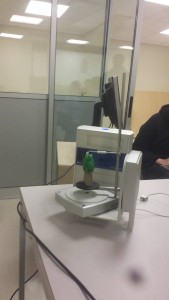
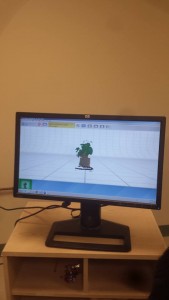

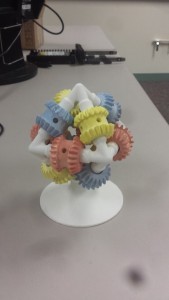
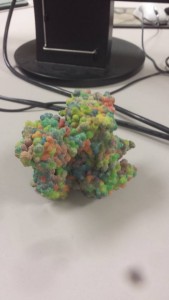
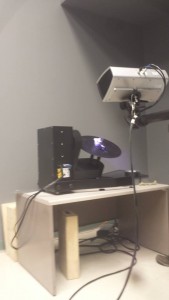
The molecules and virus prints were really eye-opening because most people would think that mostly engineers deal with 3D printing, but it can expand even further. Almost anyone can find a use for 3D printing and scanning, but they might not even realize it.